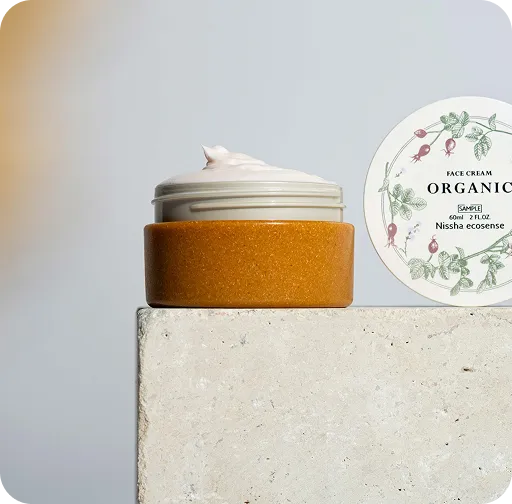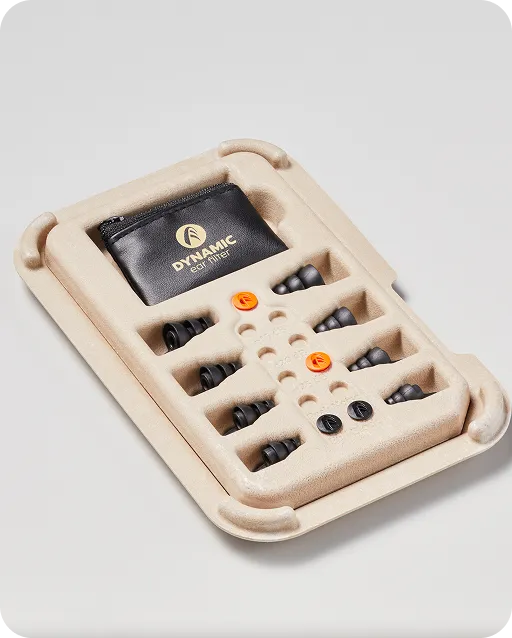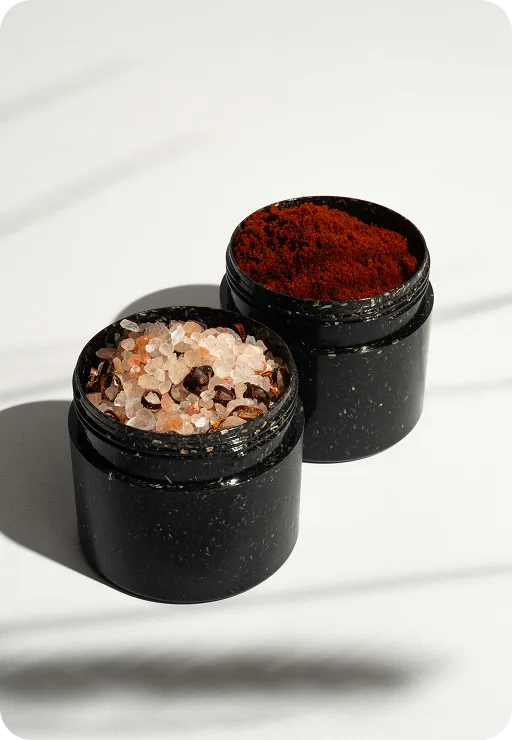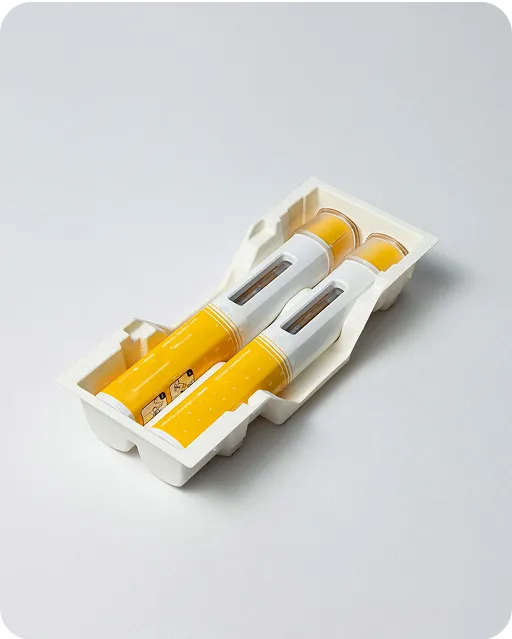Tailored Packaging Solutions, Just for You

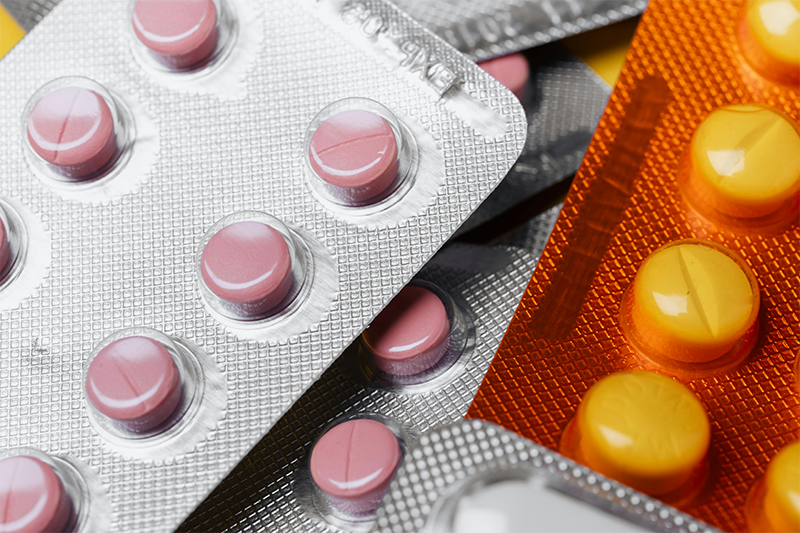
If you've ever wondered why pharmaceuticals come with not one, but multiple layers of packaging (or questioned what purpose they serve), you’re not alone.
Tailored Packaging Solutions, Just for You

If you've ever wondered why pharmaceuticals come with not one, but multiple layers of packaging (or questioned what purpose they serve), you’re not alone. From bottles to blisters, the world of pharmaceutical packaging is complex, but important.
And as the focus on sustainability grows, the pharmaceutical industry is starting to rethink its packaging strategies. With increasing concerns about waste and environmental impact, companies are now seeking solutions that not only protect the medicine, but also minimize their environmental footprint.
Today, we'll break down what is primary and secondary packaging in pharmaceuticals, explore key innovations in the industry, and show you how to make smarter, more sustainable pharmaceutical packaging decisions.
Simply put, pharmaceutical packaging is the process of enclosing medications in protective materials to preserve their integrity, ensure proper handling, and maintain their effectiveness throughout their life cycle.

Pharmaceutical packaging is typically classified into three types:
Each type serves unique purposes within the pharmaceutical supply chain, from maintaining product integrity to facilitating safe delivery to end users.
Primary packaging is the first and most critical layer of protection for pharmaceutical products. It is the material that comes into direct contact with the drug, whether it’s a pill, liquid, cream, or tablet.
Besides protecting the drug, primary packaging also makes it easier for patients to use it. Whether i's a tablet, vial, or syringe, the packaging is designed for easy access and proper dosing, helping patients take their medication the right way.

Primary packaging can be made from various materials, each chosen based on the specific needs of the medication.
Glass is often preferred for its chemical inertness, making it ideal for medications that require protection from chemical reactions. Plastic, on the other hand, is widely used because of its flexibility, lightness, and cost-effectiveness, and is commonly found in bottles and containers.
Metals like steel, aluminum, and tin-plated steel are typically used for creams, ointments, and gels. These metals are valued for their low reactivity, helping to preserve the drug’s integrity and ensuring its effectiveness.
For a more sustainable alternative in the pharmaceutical and nutraceutical industries, our Sulapac® jars provide an eco-friendly option that is just as effective as other common materials used in the industry.
Certified for food contact safety under Commission Regulation (EU) No 10/2011, the Sulapac® jars offer a biodegradable and premium solution for pharmaceuticals looking for eco-friendly primary pharmaceutical packaging.
Made from a unique composite of sustainably sourced wood chips, natural mineral clay, and plant-based binders, Sulapac® jars combine a low carbon footprint with industrial compostability – ensuring no permanent microplastic pollution.
The Sulapac® material can even reduce the carbon footprint by up to 90% compared to rPET! For these reasons, the Sulapac® jars have been widely adopted in the nutraceutical industry for supplement packaging, with Forest Spa Finland and HiQ-Nature being just some of the brands already taking advantage of our supplement jars.
The Sulapac® jars embrace beautiful design, sustainability and functionality, and come in a variety of colors and sizes:
Secondary packaging is the outer layer that houses the primary packaging. Unlike primary packaging, which directly interacts with the product, secondary packaging offers added protection, helps organize products for easier handling, and ensures compliance with shipping, branding, and storage regulations.
Although it doesn’t directly contact the medication, it is essential in safeguarding the product and maintaining its integrity throughout the supply chain.

Cardboard is commonly used for its strength and ability to protect products during transport and storage. It is also easy to print on, making it ideal for branding and regulatory information. Paperboard is a lighter alternative, often used for smaller packages or retail cartons, offering flexibility while still providing protection.
Plastic films are frequently used in shrink wrapping and flexible packaging, providing an extra layer of defense against moisture, dust, and tampering. Foil, particularly aluminum, is sometimes combined with cardboard or plastic for additional protection, especially for products sensitive to light or air.
Labels and inserts are also important in secondary packaging, offering crucial details like usage instructions, safety warnings, and branding while ensuring compliance with regulations.
The pharmaceutical industry, known for its high use of single-use plastic packaging, faces an urgent need to reduce both plastic waste and CO2 emissions during the product life cycle.
For a more sustainable alternative, we offer innovative pulp-based packaging solutions designed to reduce environmental impact. Our Pulp-Injection technology provides the perfect balance of design flexibility, functionality, and sustainability – all within a single product.
Our Pulp-Injection components offer a truly eco-friendly alternative to plastic, providing a lightweight yet robust solution with superior rigidity. The molding process uses sustainable pulp-based materials, ensuring a reduced environmental footprint.
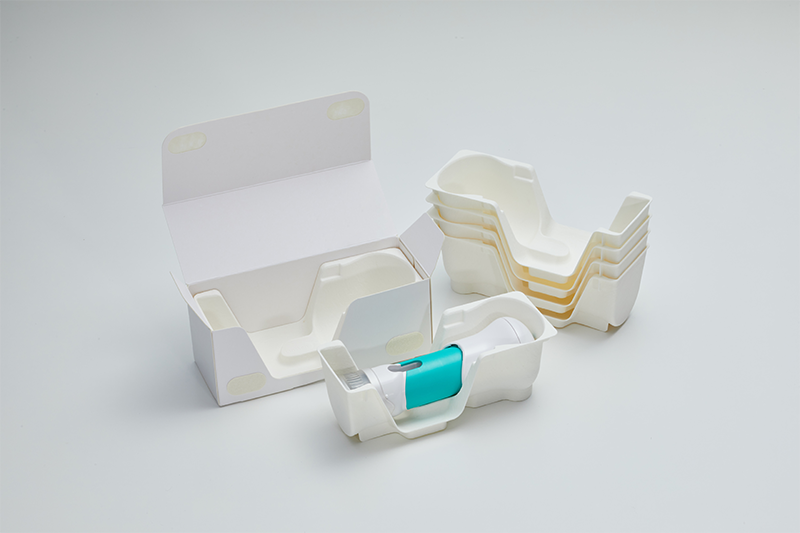
The Pulp-Injection is:
*up to 10% of total paper waste
Whether it’s secondary packaging, caps, or mechanical components, the Pulp-Injection delivers high performance and sustainability. It is even recognized with the Packaging Innovation Award at Pharmapack 2024!
Tertiary packaging is the final layer of packaging used to group multiple secondary packages for bulk handling, storage, and transportation. It ensures that products remain intact during distribution and are easier to move from one location to another.
This type of packaging is designed for durability, often utilizing materials like pallets, shrink wraps, and corrugated boxes. While it doesn’t come into direct contact with the product, it plays a vital role in streamlining logistics and ensuring safe delivery.
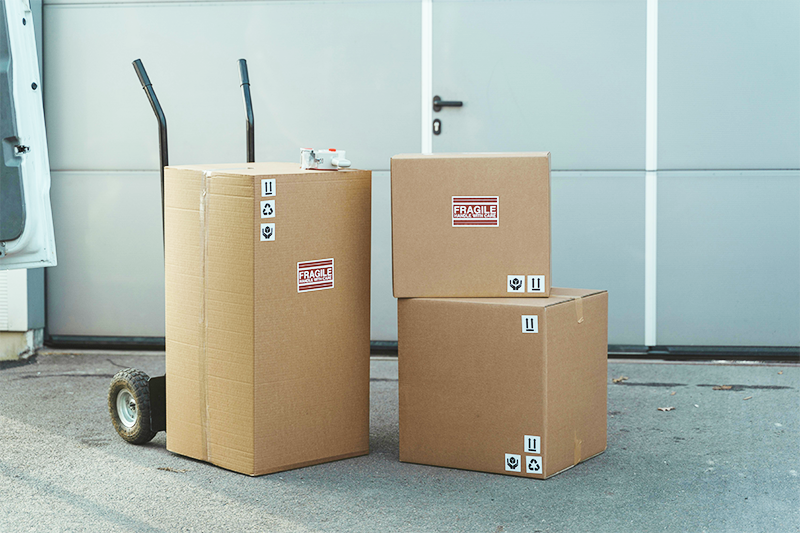
Tertiary packaging is typically made from durable materials like heavy-dutycardboard, wood, and plastic for pallets, along with shrink film for bundling. These materials are chosen for their ability to withstand the stresses of transport and to protect the products inside.
So, now we've learned that not all packaging is created equal. Primary, secondary, and tertiary packaging each have their own roles in keeping medications safe, organized, and compliant, making them all critical in some way or another.
Here's a quick summary of the differences between these packaging types, showing how they each contribute to the product's journey from manufacturing to delivery and why they are needed in pharmaceutical packaging.
*Heavily monitored by regulators like the FDA and EMA to ensure safety.
Selecting the best pharmaceutical packaging requires careful consideration of several factors:
The pharmaceutical industry is continuously advancing, and packaging innovations play a significant role in improving quality and sustainability. Some of the main developments in pharmaceutical packaging include:
Technology is enhancing pharmaceutical packaging in exciting ways. Innovations like QR codes, NFC tags, and embedded sensors are adding interactivity to packaging.
These technologies can provide real-time data, such as dosage reminders or storage condition monitoring. Imagine scanning your medicine box to get instant dosage reminders or track a shipment's temperature. Pretty cool, right?
Sustainability is at the forefront of pharmaceutical packaging innovation. Solutions like molded pulp and PaperFoam® are transforming how pharmaceutical packaging can be both functional and eco-friendly.
Made from biodegradable materials like molded pulp, these products reduce plastic usage while offering the same level of protection as traditional packaging materials.
For example, transport packages for vials and self-injector trays made from molded pulp provide the strength and rigidity needed to protect the contents while reducing environmental impact.

Ensuring the safety and integrity of pharmaceutical products is critical, and tamper-evident packaging plays a major role in this. Seals, stickers, and other tamper-evident features are evolving, making it easier for consumers to identify whether a product has been tampered with.
Patient-centric packaging is on the rise, with solutions designed to meet individuals’ unique needs. This includes easy-open packaging, braille labels for visually impaired patients, and even child-resistant closures. Packaging like self-injector trays can be customized for a perfect fit, ensuring both functionality and ease of use.
In pharmaceutical packaging, simplicity and functionality are key. The growing focus on waste reduction aims to minimize and optimize packaging weight and volume while still delivering all the essential information and ensuring safety and compliance.
This includes slimmer, more efficient packaging that minimizes excess material but still provides the necessary protection and branding.
By eliminating unnecessary components and opting for more sustainable materials, pharmaceutical companies are reducing their environmental footprint while maintaining the integrity and safety of their products.
Packaging might not get much attention in the pharmaceutical world, but it's the unsung hero behind the scenes. Primary packaging keeps your medicine safe, secondary packaging provides all the essential information, and tertiary packaging ensures it gets where it needs to go. Every layer matters.
The world's shifting focus is clear, packaging needs to be smarter and more eco-conscious. Businesses have the choice to innovate with sustainable materials, recyclable options, and greener processes.
So next time you grab a pill or open a blister pack, take a second to appreciate the care and thought that went into keeping your medicine, and the planet, protected.

We here at Nissha will support you every step of the way!

